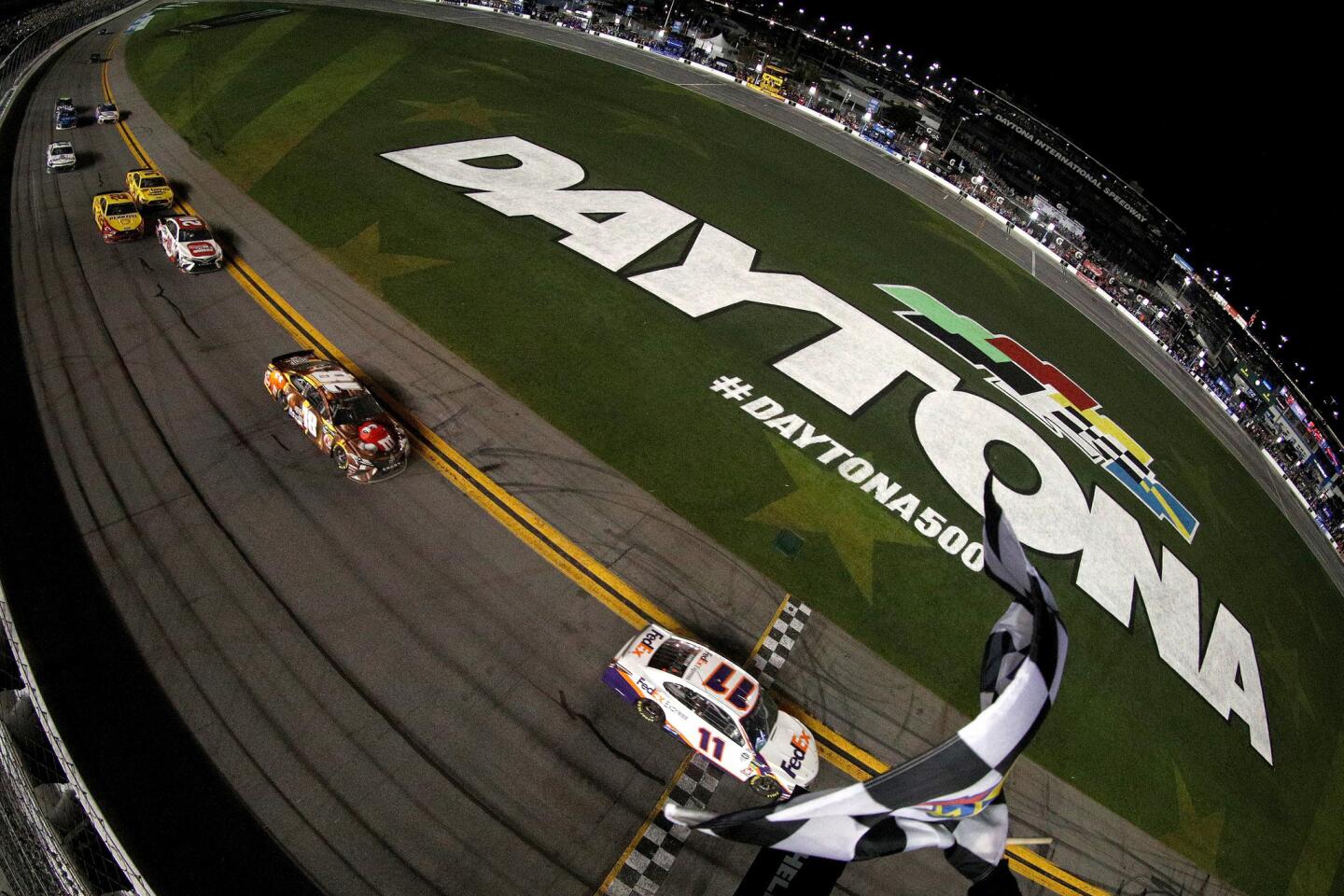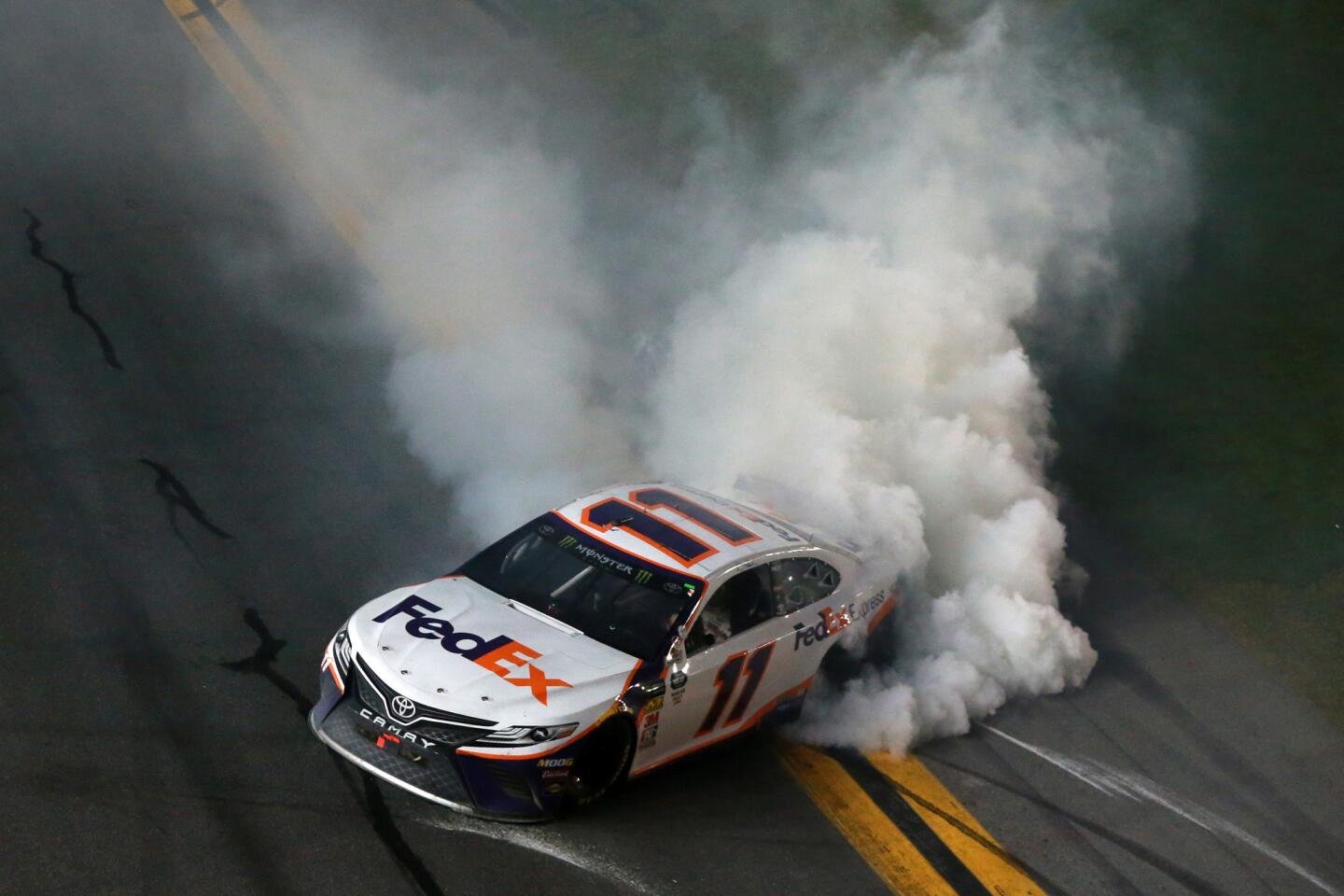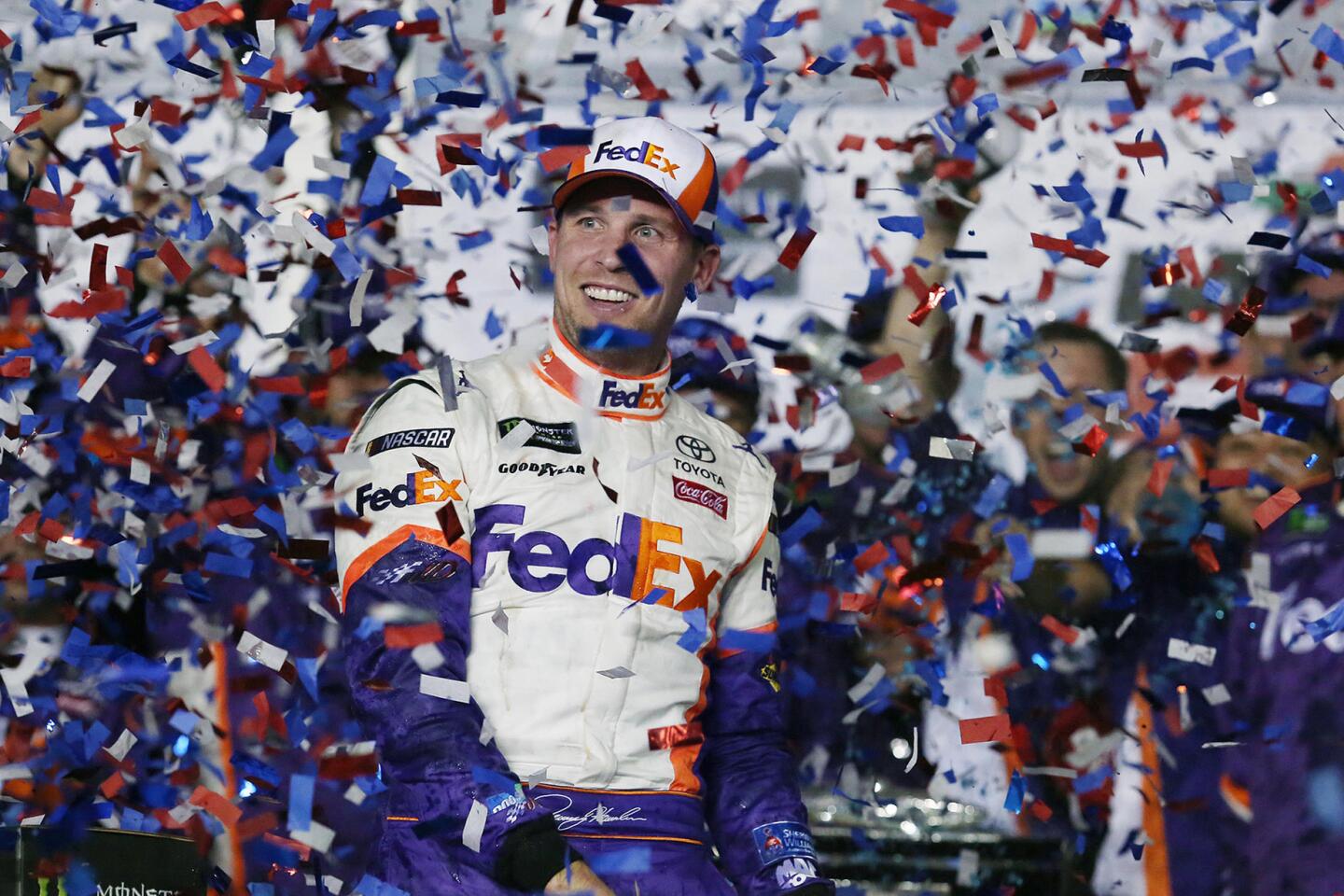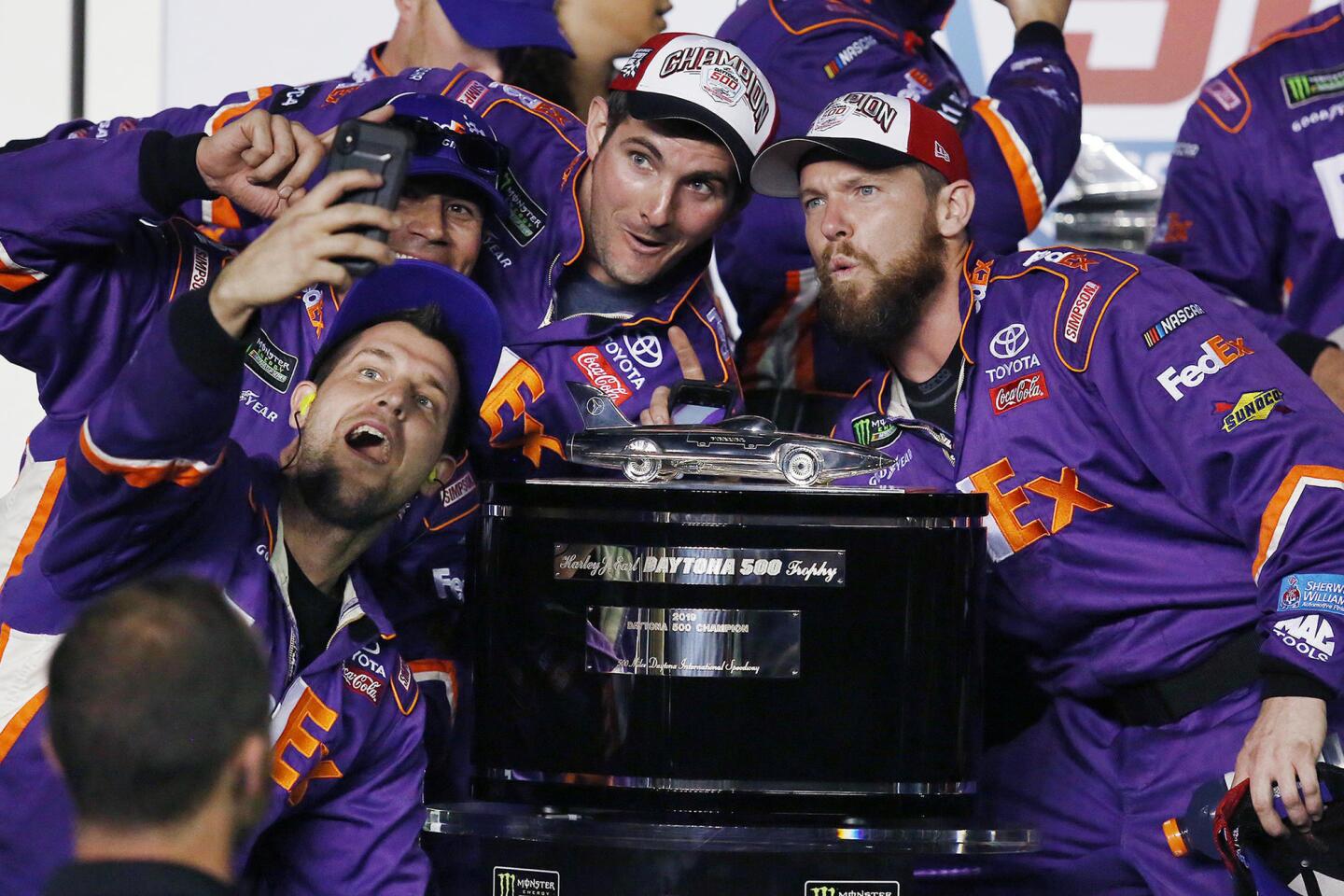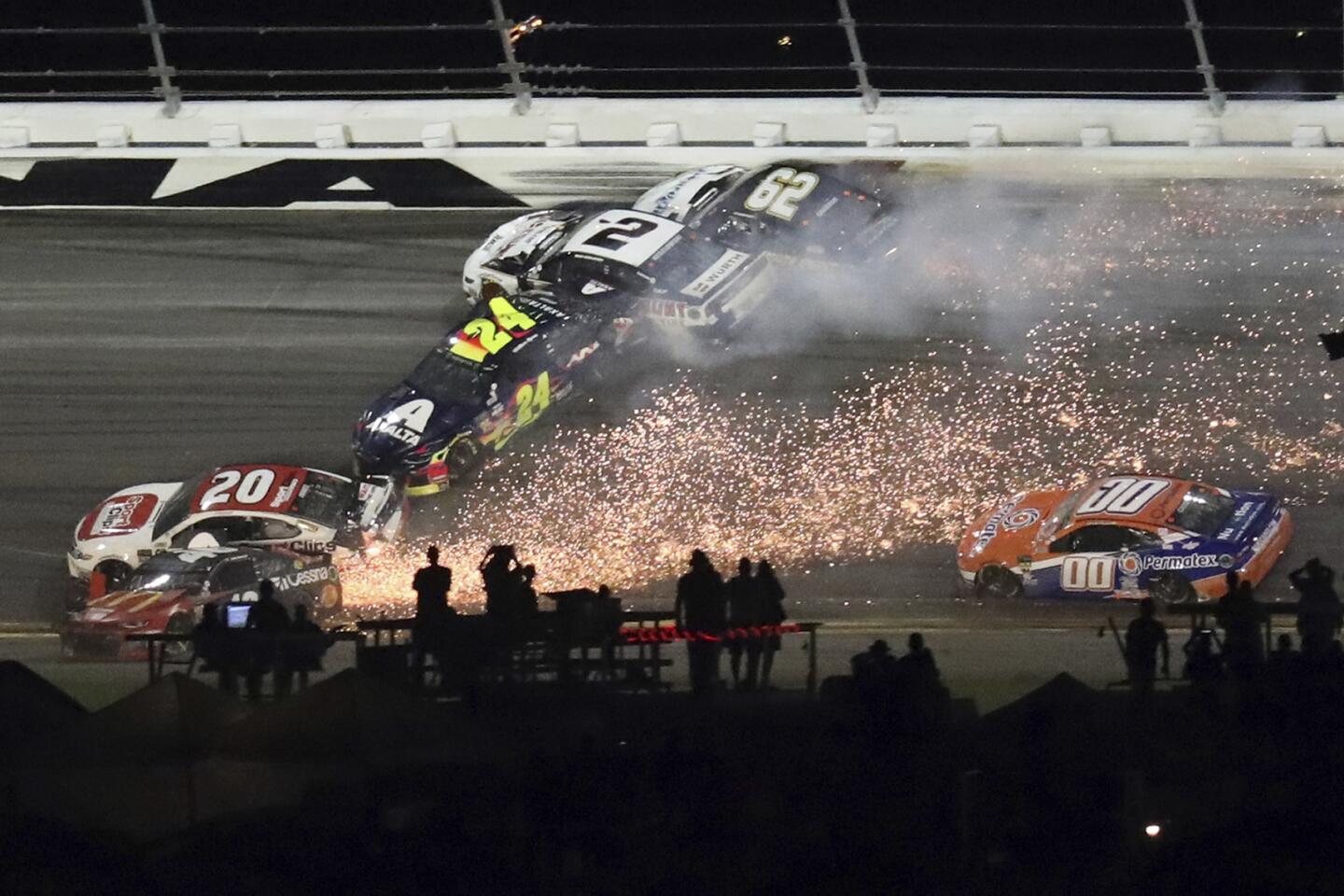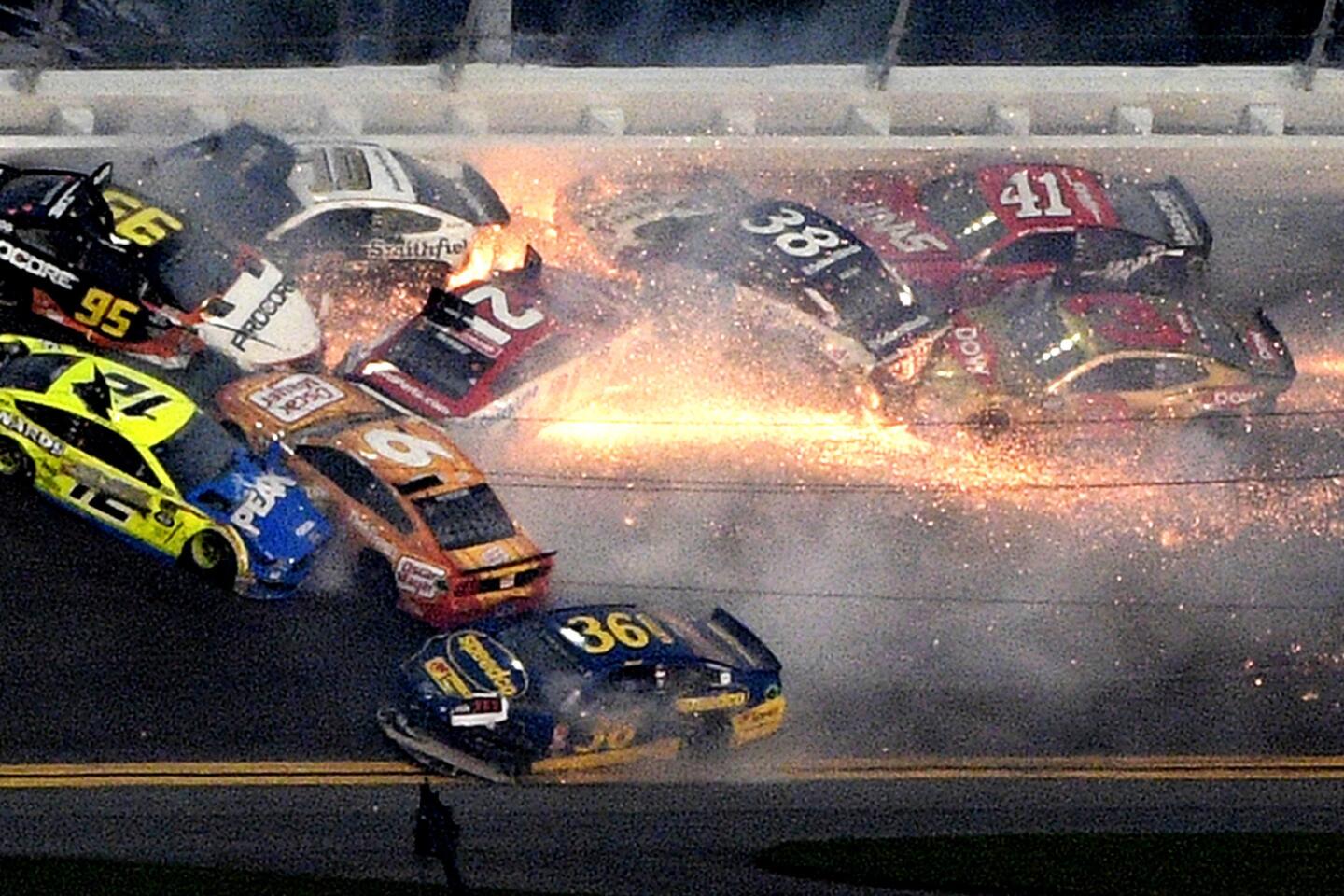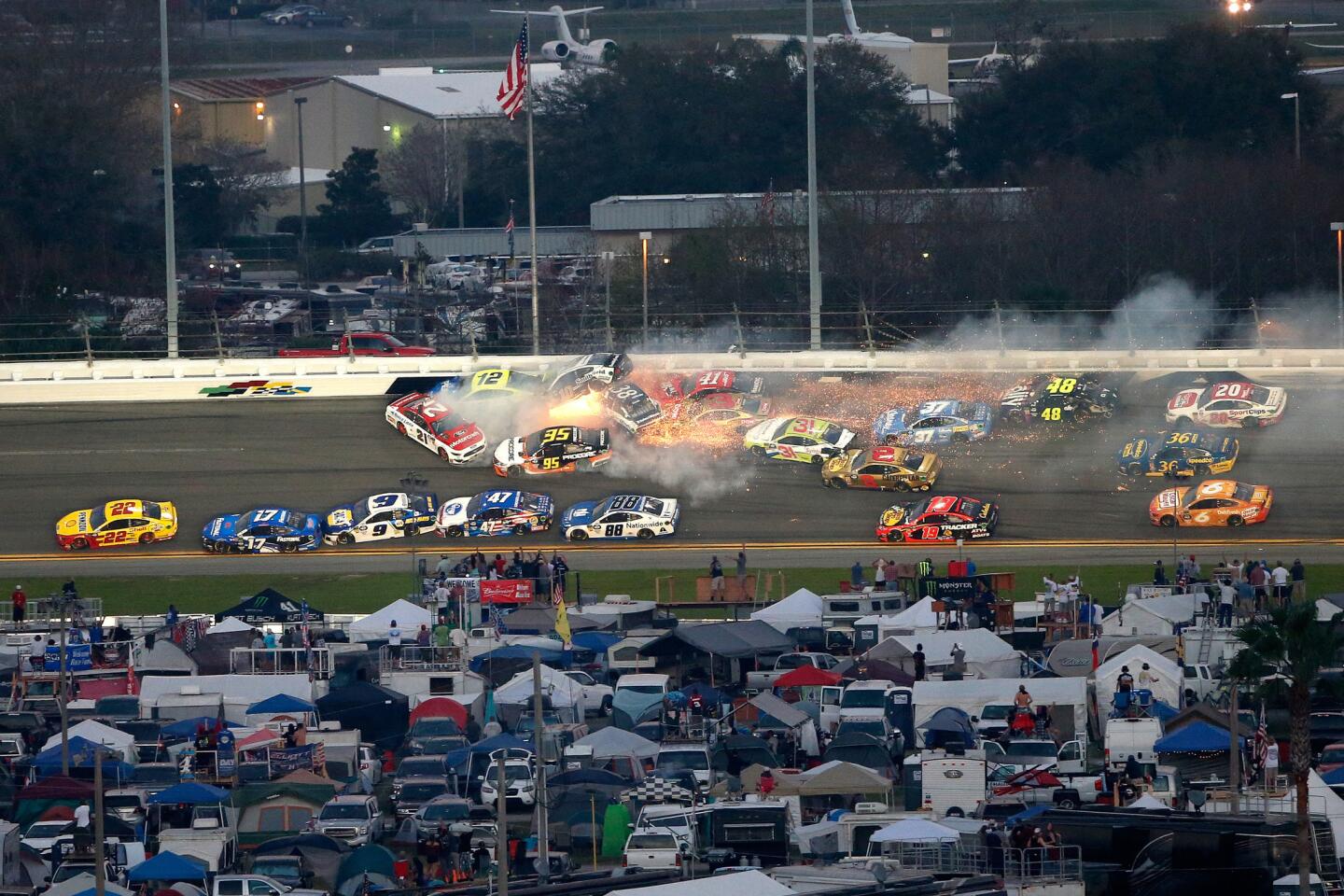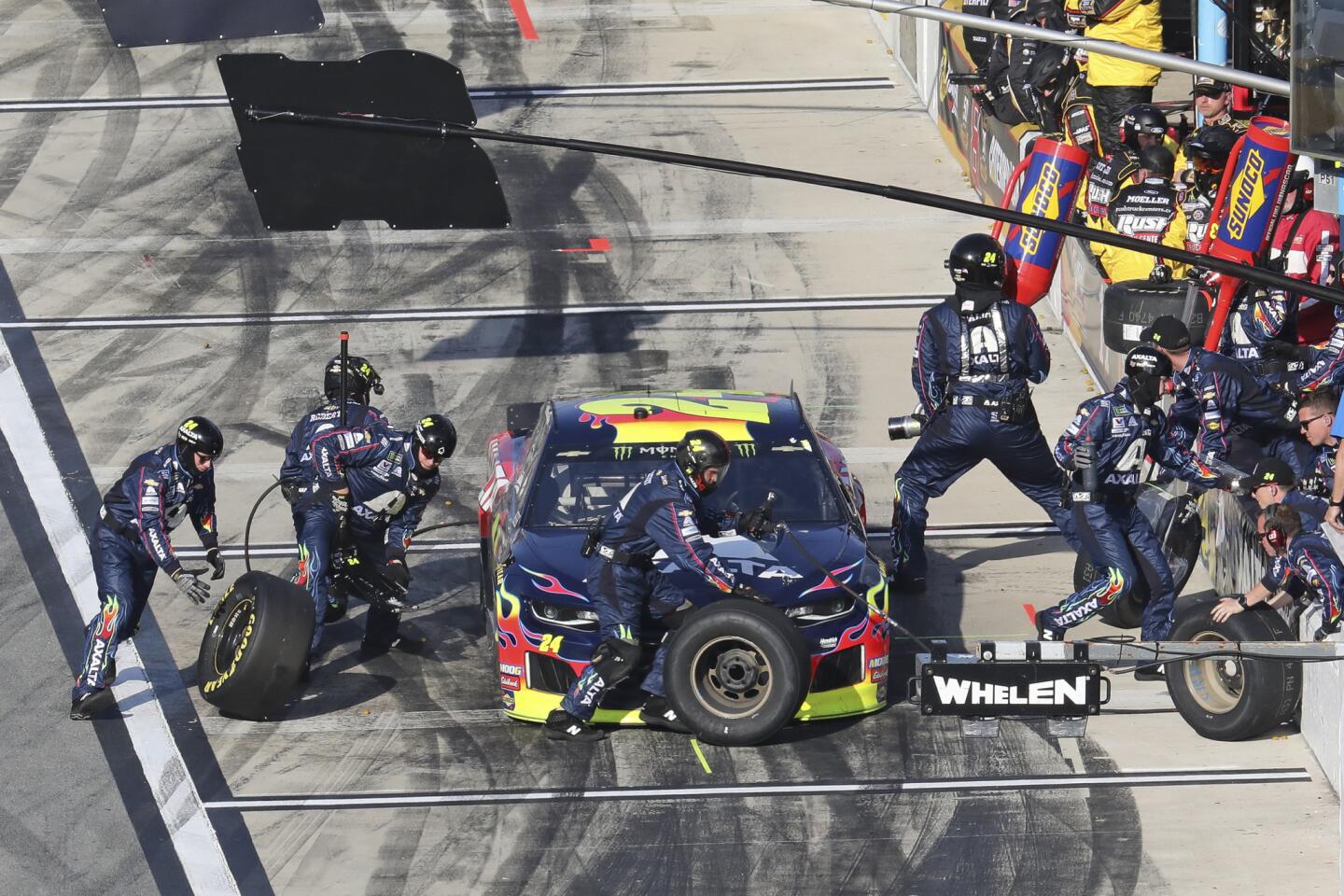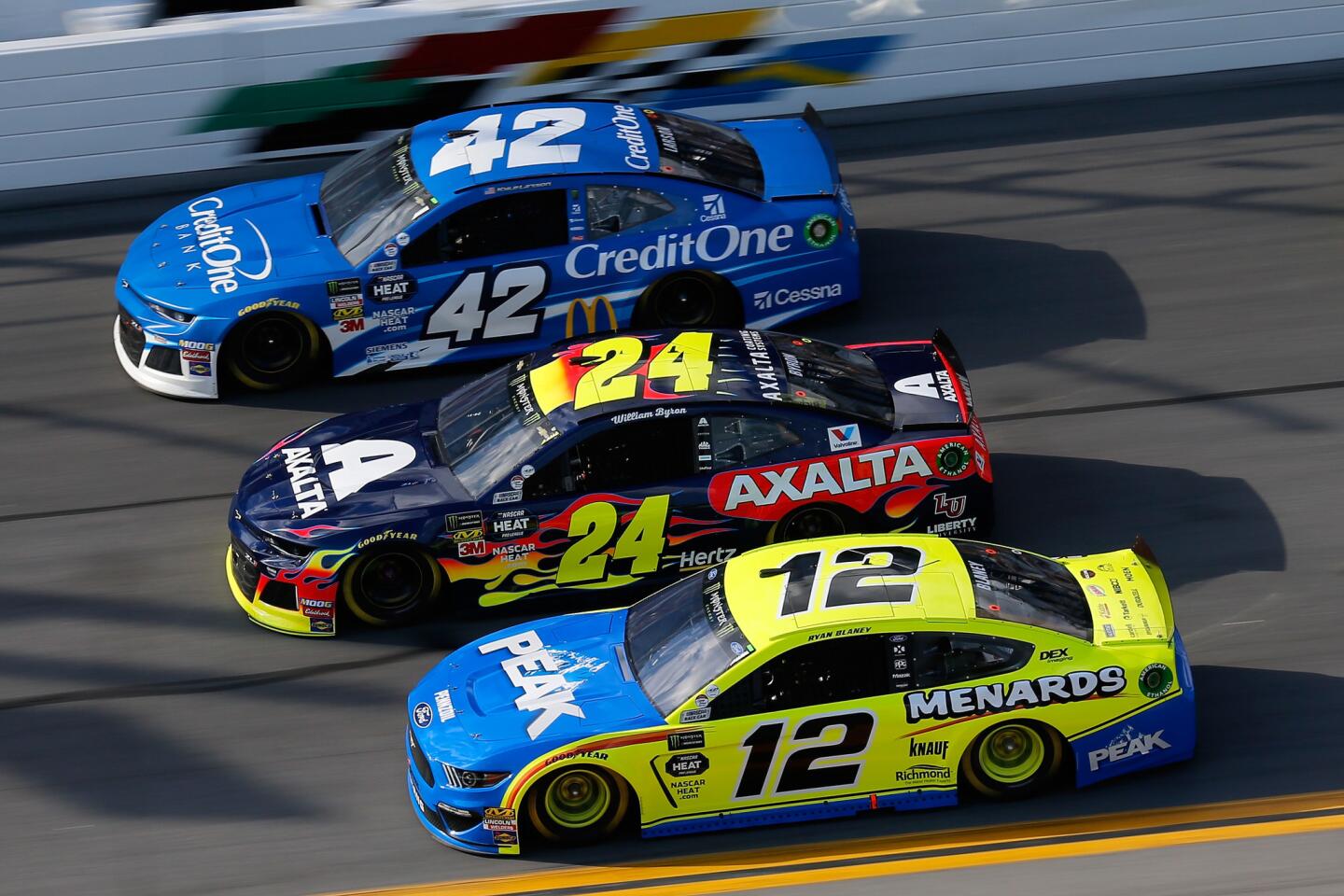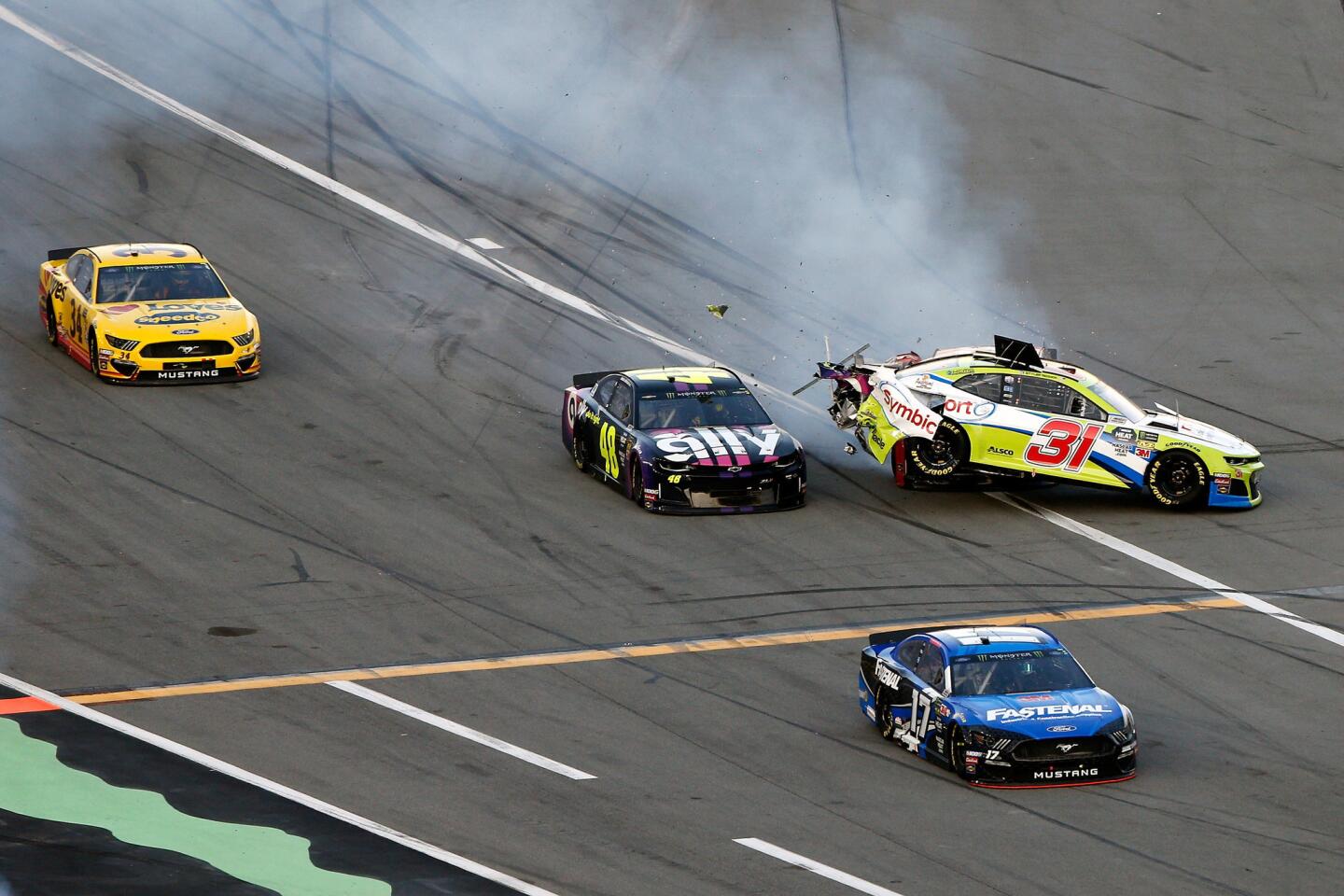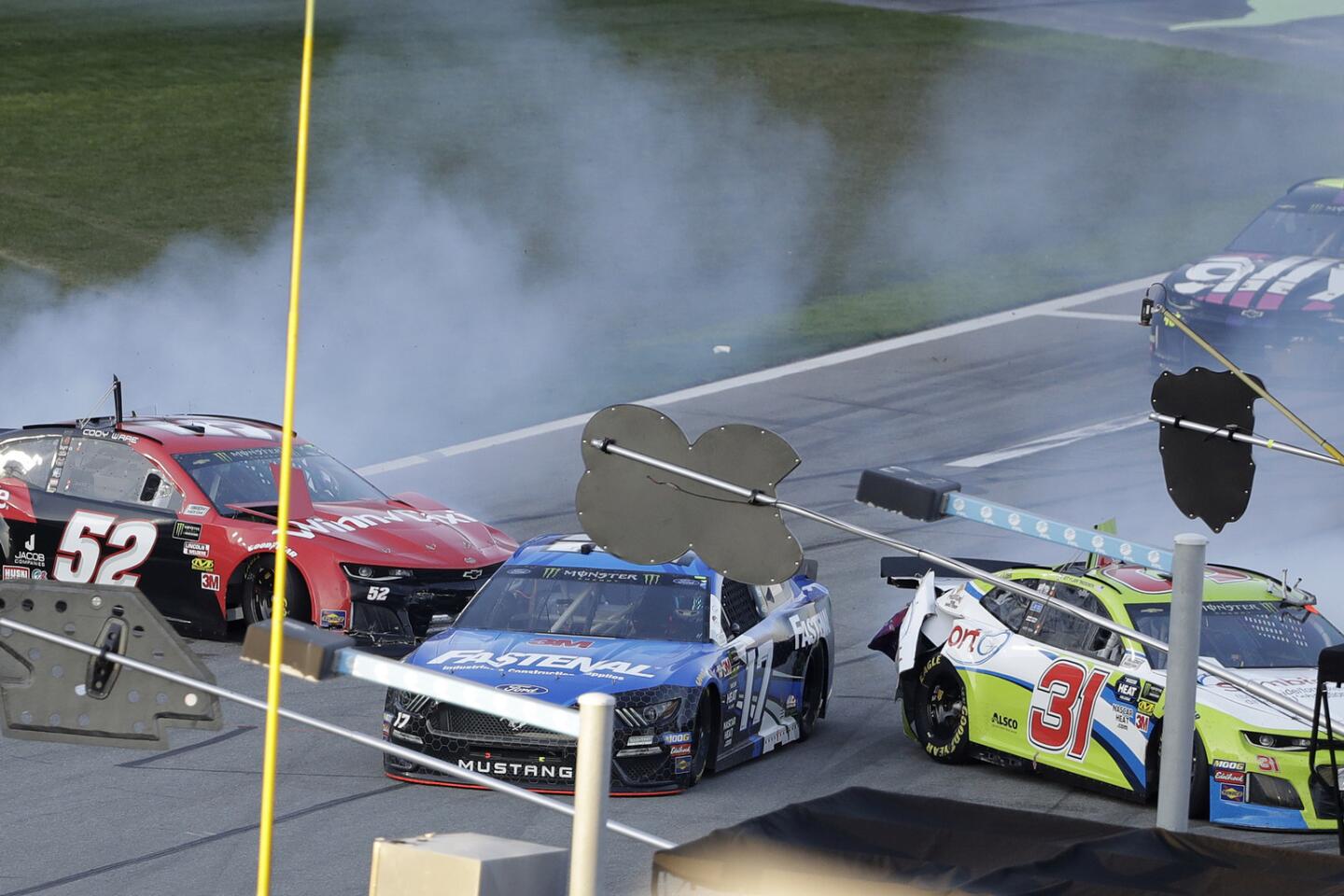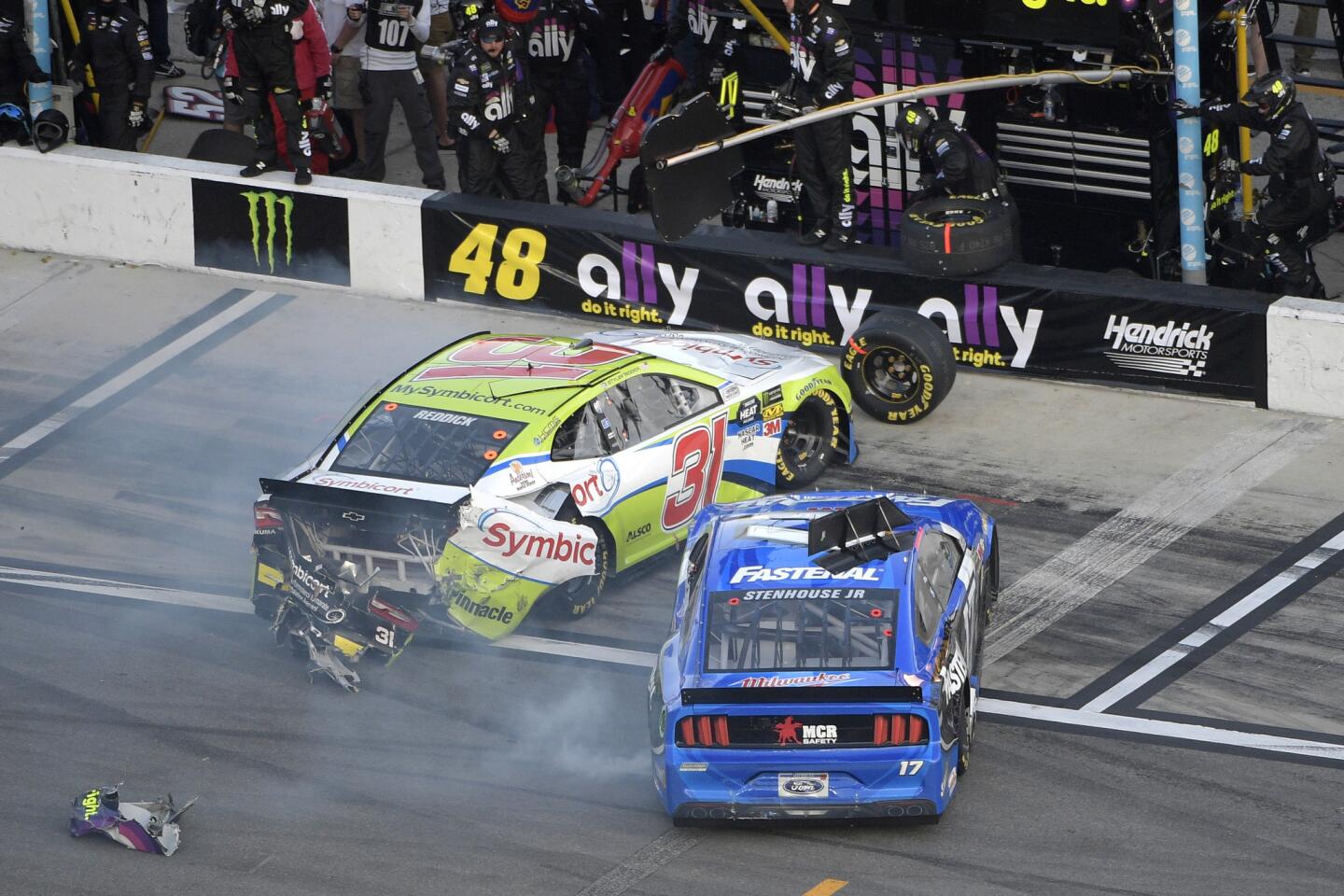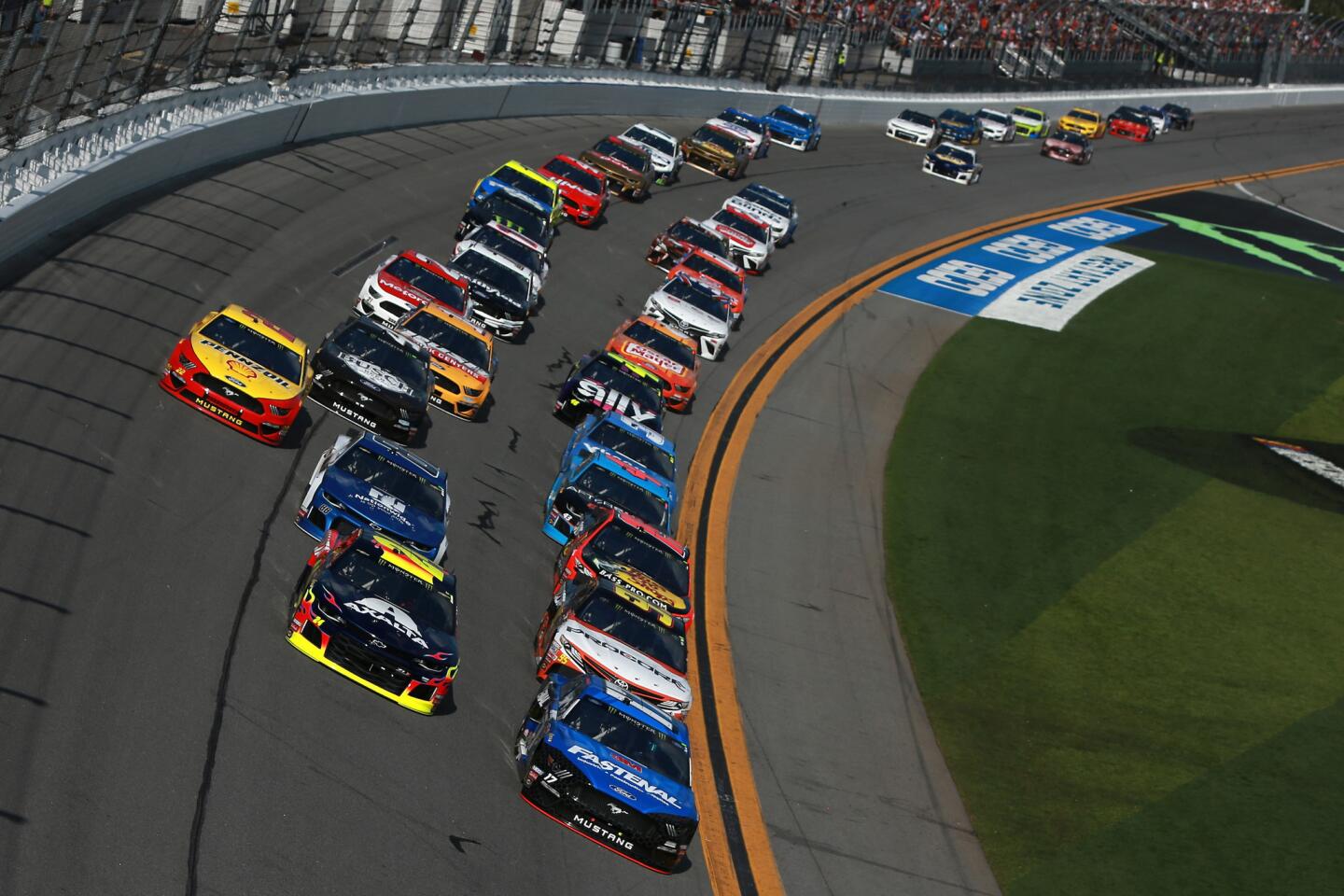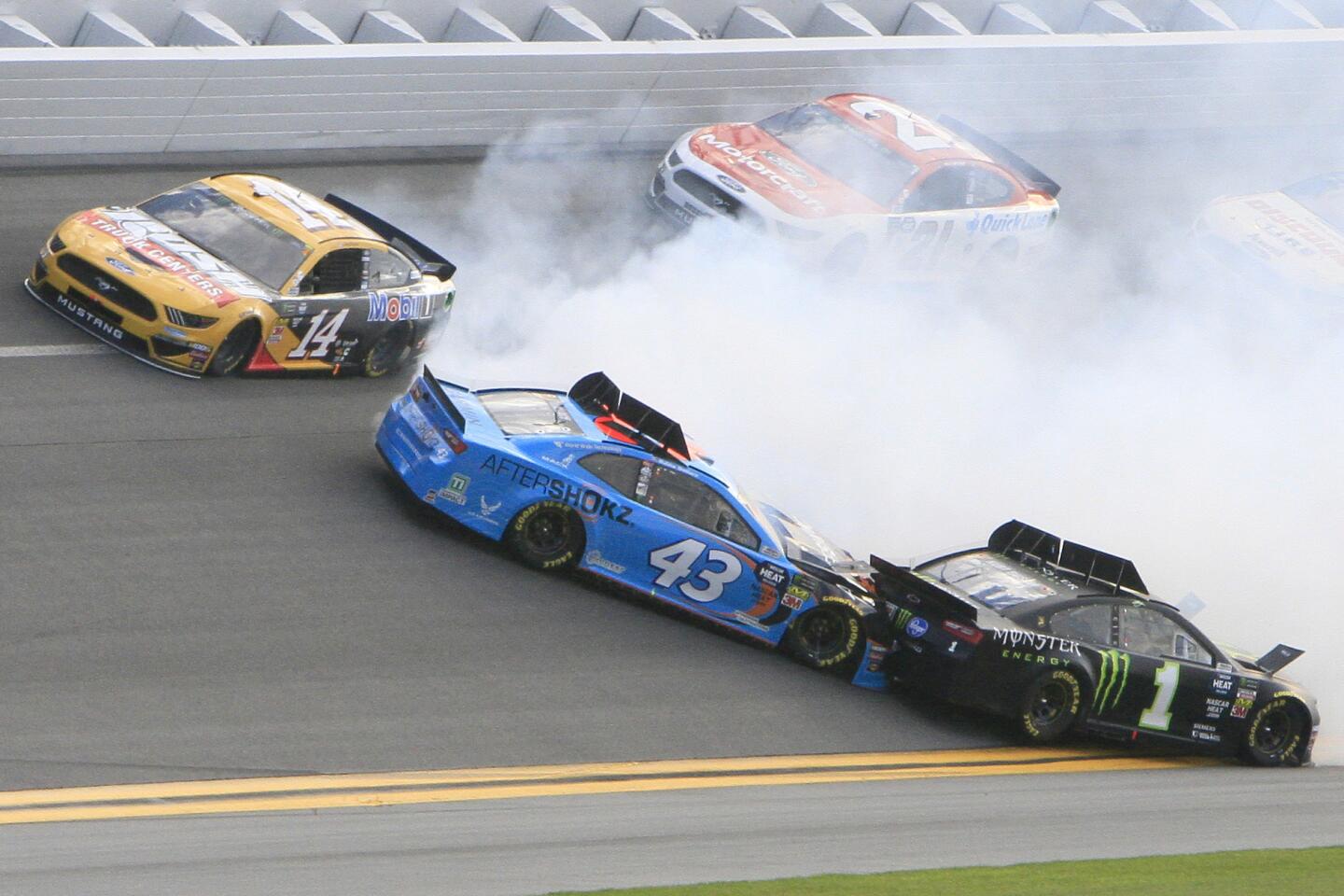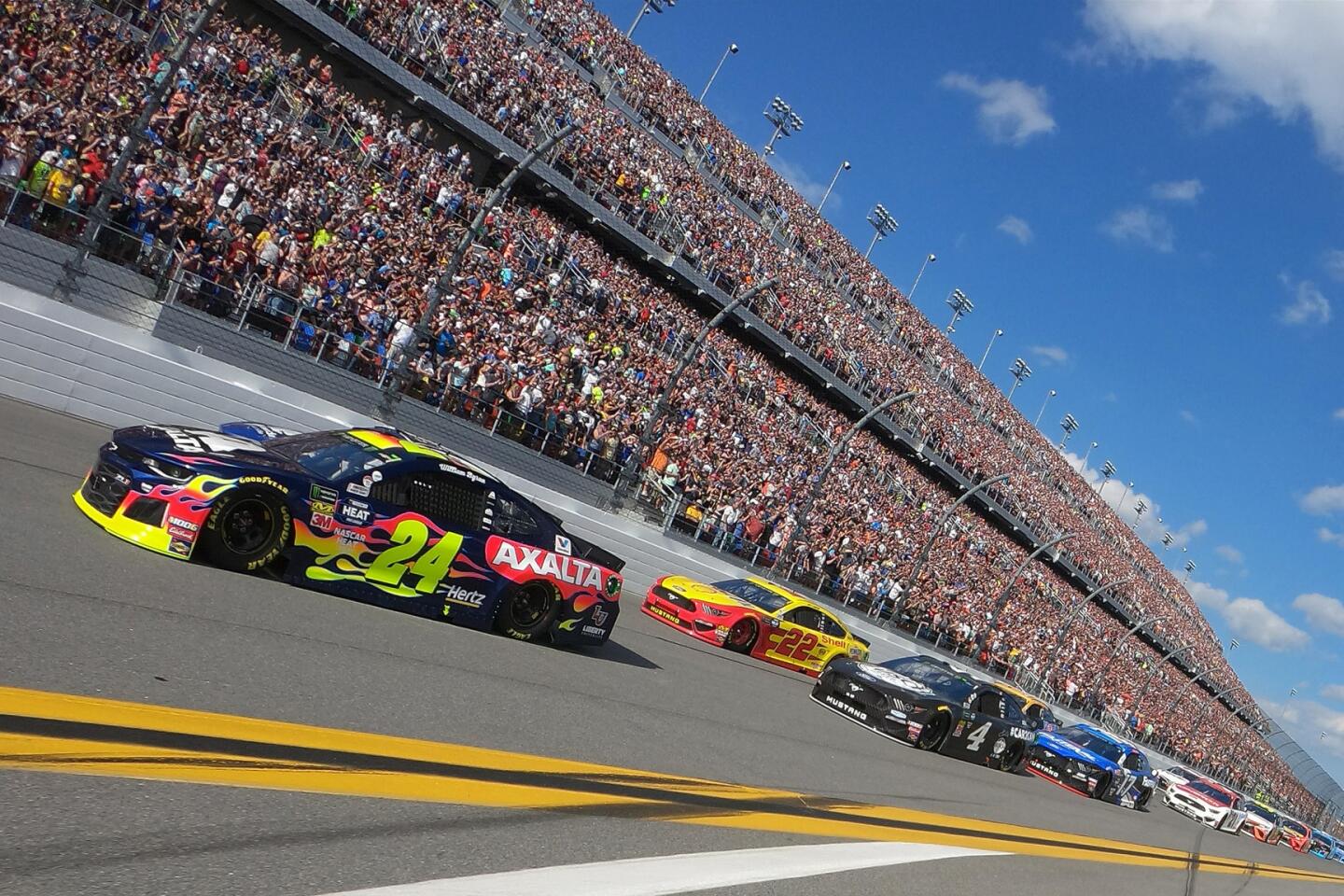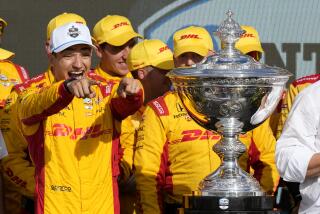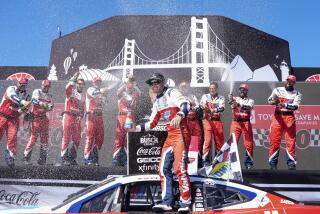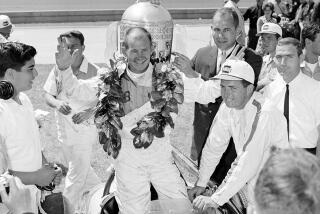Denny Hamlin wins his second Daytona 500 in a crash-filled finish
Reporting from daytona beach, fla. — As darkness descended upon Daytona International Speedway on Sunday signaling both the end of the 61st running of the Great American Race but also the end of the restrictor plate era, Denny Hamlin survived three cautions, including two red flags, all in the final 10 laps, to win his second Daytona 500.
It was the kind of season opener that NASCAR needed to sell people on the idea that the sport was reversing its trend of declining television ratings and attendance. Daytona announced a sellout crowd of more than 100,000, its fourth in a row.
The race had it all with side-by-side-by-side racing, plenty of wrecks where no one was hurt, and an emotional component involving the winning team’s owner.
The Toyota team is owned and run by Joe Gibbs, the former NFL coach, who not only took first but had the second- and third-place drivers in Kyle Busch and Erik Jones. Gibbs’ focus has been split lately as the team has dealt with the death of co-founder, J.D. Gibbs, Joe’s son. J.D. died last month at 49 of a progressive neurological disease.
“This is the most emotional and biggest win I’ve ever had in my life, in anything,” Gibbs said. “J.D. built our race team and ran for it 27 years, day to day. … J.D.’s favorite number was 11. Denny’s number is 11. Denny put J.D. over the goal post.
“I don’t believe this just happened. I think the Lord looked down on us. Everybody in my family was emotional. I called the sponsors and they were emotional. This is the most emotional night of my occupational life.”
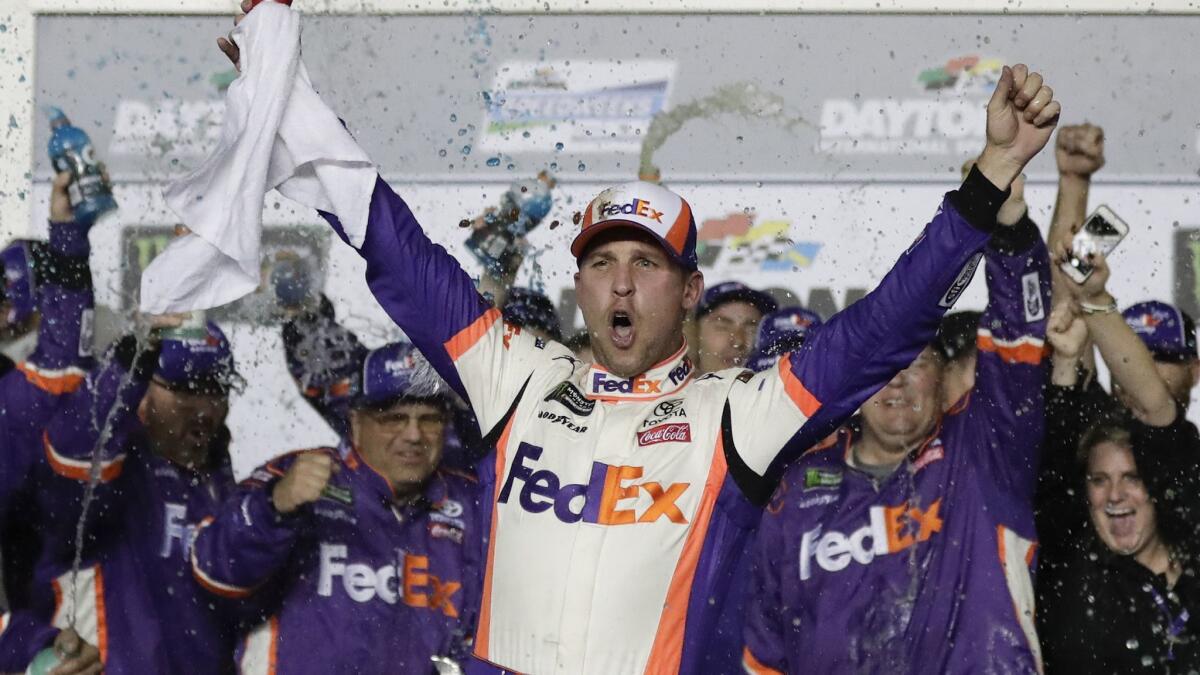
The race had to go to overtime to find a winner. On the final restart, Hamlin chose the high side leaving Busch on the bottom. It proved to be the right move. He separated himself from Busch and withstood serious efforts from the cars behind him to push someone else to the lead.
“All the experience I had, I knew what line I wanted and it was 50-50 that I would get that line and I did,” Hamlin said. “I knew the top line was the one I was going to choose. When I saw him and the 22 (Joey Logano) lined up I said, ‘Yeah, we’ll do it.’ It still gave him a great opportunity on the backside and we blocked it.”
Busch understood the reality of team racing, but was obviously disappointed at coming up short of his first Daytona 500 win.
“It’s first and foremost to try to make sure that we at least get a JGR (Joe Gibbs Racing) car to victory lane,” Busch said. “Since [Hamlin] got the lead, [it was agreed] he wanted to do it again (be on the top on the final restart.) You know, it is what it is. At least we got a JGR car in victory lane. That’s the big picture. That’s what matters, and we move on.”
The final caution came with two laps to go, which triggered the automatic two-lap overtime. It started when Clint Boyer went low in Turn 3 to force Michael McDowell high and he went sideways and hit pole-sitter William Byron and Chase Elliott. Eight cars were involved in the accident and the race was red-flagged and halted for almost 15 minutes.
Winning Daytona is rarely easy, predictable or particularly pretty. But it many ways, this last race of the restrictor plate era helped personify what it was about during its 31 years of existence. It had created, especially at Daytona, a culture of crashes and chaos.
After Sunday, NASCAR is instituting a thicker spacer, which is designed to slow cars down but also make the racing more competitive. It will be used at all tracks 1.2 miles and longer, not just Daytona and Talladega.
Everyone thought the race’s defining moment occurred less than 10 laps to go when Paul Menard bumped Matt DiBenedetto, who was running fourth, turning him in front of the remainder of the field and bringing the race to a 25-minute red-flag halt. There were 21 cars involved, leaving the track looking worse than an old Southern junkyard. But it was only the start of the drama.
After the restart and with six laps to go, Kyle Busch took a slight lead as more chaos developed behind him. Ricky Stenhouse, Jr., tried to find space where there wasn’t, and caused a seven-car wreck bringing out the 11th caution of the race.
The jockeying started to get serious when the caution came out with 20 laps to go when Kyle Larson hit the wall in Turn 3 in a single-car accident. Racing resumed after three caution laps. With 13 laps to go Brad Keselowski spun out bringing on the next caution, which led into the 21-car wreck.
There were 15 lead changes among nine drivers. DiBenedetto led 49 laps and Byron was in front for 44. Hamlin led 30 laps.
Still, it was the last 10 laps, starting with the first red flag, that everyone will remember.
“Through the red flags, I was taking everything in,” Hamlin said. “I wasn’t nervous. I knew in my head what I needed to do. … I put forth all the homework on where I needed to be. Circumstances were going to dictate what happened.”
Circumstances he will remember for a long time.
More to Read
Go beyond the scoreboard
Get the latest on L.A.'s teams in the daily Sports Report newsletter.
You may occasionally receive promotional content from the Los Angeles Times.
